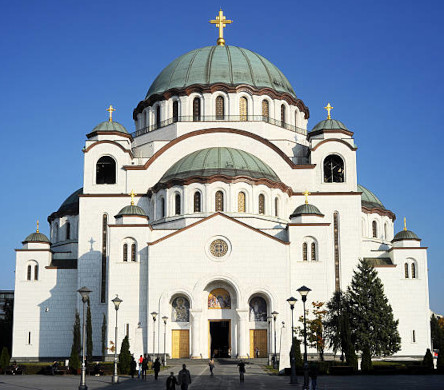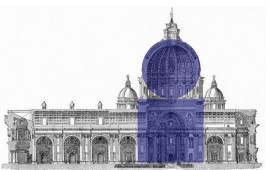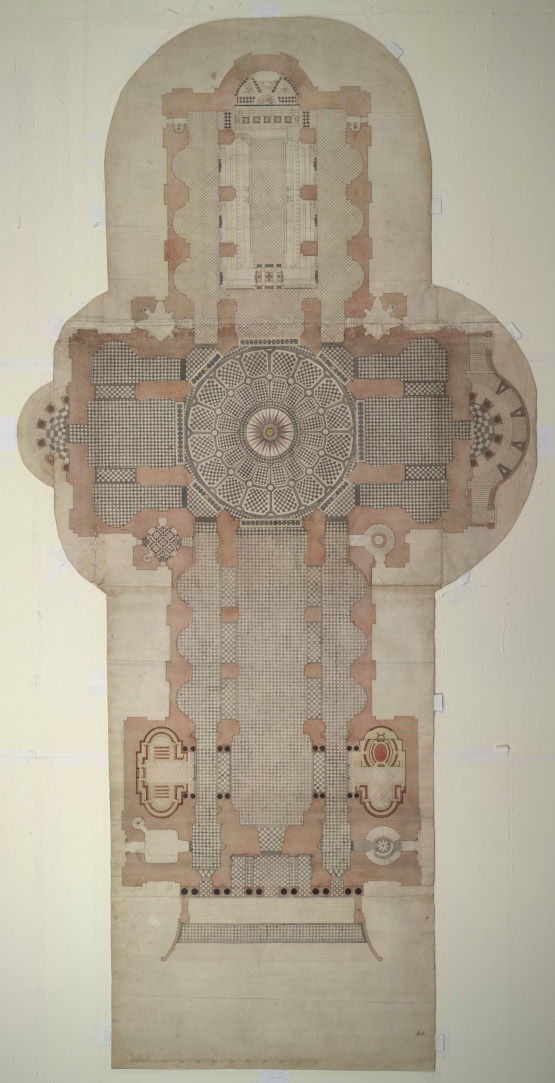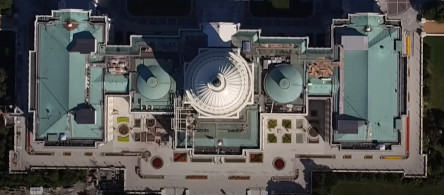Spheres & Domes


A sphere is a geometrical object that is a 3D analogue to a 2D circle. Stars and planets are often seen as spheres.


Naturally occurring stone spheres
Over 130 manmade “living” self-reproducing perfectingly round metal spheres embedded in Precambrian rock have been found in S-African mine. They are over 3B yrs old, emitting a subtle vibration in the ears of the discoverers. Their sizes vary from 3 to 100mm:

These “Klerksdorp” spheres are connected to Earth’s EM-field. Placed all over the world, they may be holding something deep inside the earth in place, or are somehow protecting us. Seismic activity around all spheres WW is increasing.
In the 1950s, a radical new design "the geodesic dome" changed the way engineers looked at domes for the first time in 2,000 years. Invented by American architect Buckminster Fuller, the geodesic dome is a partial sphere-shape, structured from a series of triangles rather than arches:

Montreal Bio-sphere

Kempinski-Beijing (97m) Hotel-Sphere

Manufactured items including pressure vessels and most curved mirrors and lenses are based on spheres. Spheres roll smoothly in any direction, so most balls used in sports are spherical, as are ball bearings, apples, and incense burners:




A dome is a self-supporting structural element of architecture that resembles the hollow upper half of a sphere. Despite their thinness, domes are some of the strongest and stiffest structures in existence today.

8thC-BC Temple-dome 18 flrs-underground-city

Yakhchal, a 4thC-BC Refrigeration Dome

Natural Chocolate Dome-hills, Philippines
Before domes, there were rectangular buildings. Almost all ancient buildings had roofs supported by forests of columns. The columns prevented the heavy roofs from collapsing, but they left very little open interior space. The Parthenon in Athens is an example of this design.

Around 100 A.D., Roman builders rotated an arch in a circle and discovered that it created a strong 3-dimensional shape: the monolithic dome. So, they began capping churches and mosques with this new and brilliant design:



Rome's Pantheon is remarkable for its size, its construction, and its design. The enormous dome stretches 43 mtrs in diameter. Given the dome's size and weight, Emperor Hadrian's engineers had to find ways to lighten the heavy structure. They scooped out 140 waffle-like depressions, called coffers, in five rows around the dome's base to eliminate some masonry and reduce the dome's weight. They also carved an opening, called an oculus, at the top of the dome, which reduced some mass and created a daily light show for which the Pantheon is famous. Finished in 123 AD, it remains the world's largest unreinforced concrete dome.

“By every measure of success from an architectural, artistic, engineering, and age-viewpoint, the Pantheon is the greatest building that was ever built.”

An octagonal building surrounds the Dome of the Rock in Jerusalem, of 20.2 mtrs in diameter and of 20.5 mtrs height. It is built on the site of the 2nd Jewish Temple.

Dome of the Rock circle held by a double square

The Hagia Sophia is a mosque and former church serving as a major cultural and historical site in Istanbul, Turkey. The site was an Eastern rite church from AD 360 to 1453, except from 1204-1261, when it was a Latin church. Till 1507, it was the largest Cathedral in the world.

Haghia Sophia size vs dbl-dome St. Sava (Belgrade):

It was formally called the Church of God's Holy Wisdom (Greek: Holy Sophia) and upon completion became the world's largest interior space and an early user of a fully pendentive dome. It is the epitome of Byzantine architecture.

One of the greatest architectural/engineering achievements of the Renaissance, Filippo Brunelleschi’s dome for Florence Cathedral was completed in 1436, and has a diameter of 45 mtrs. Built from brick, the octagonal dome remains the largest masonry dome ever built.

The construction of this Gothic masterpiece is called "Cathedral de Santa Maria del Fiore". Its exterior has white and brown paneling, is adorned with intricate marble facades, and features an array of sculptures and artwork.
St. Peter's Dome in the Vatican is Michelangelo's masterpiece, and is with 136 mtrs the tallest dome in the world.

The internal diameter is 42.5 mtrs, with an opening of 8 mtrs at the top. The building itself is a sphere on a cube:


Michelangelo, then in his seventies, wrote, "I undertake this only for the love of God and in honor of the Apostle." He insisted that he should be given a free hand to achieve the ultimate aim by whatever means he saw fit.

St. Peter's Basilica, one of the most renowned works of Italian Renaissance architecture, is the largest church in the world by interior measure. However, it is neither the mother church nor the cathedral of the Diocese of Rome, which is held by the Archbasilica of Saint John Lateran. It has an elongated nave in the Latin cross form. Total length is 220 mtrs.
![]()

![]()
Φ and Π and GMR in Latin cross, and square/cube in square/cube
When a dome is too heavy, the sides push outward, and cracks appear. Iron tension rings, like hoops on a barrel, prevent this thrusting outward. It worked well over time.

The surface of the dome is subdivided by ribs into 16 wedge-shaped compartments with pre-ordered fields and spaces, and is entirely covered with images on a background of a golden sky of stars. The inner dome reaches a height of 117 mtrs, while the cross at the top reaches over 136 mtrs high:

By the early 1400s, Roman engineers began building two domes in one to create the illusion of even greater height. It is “double-shelled with a cavity”, taking on an ogival shape, more slender than the original semi-circular one.

111m high St. Paul's Anglican Cathedral Dome, 1740


Hungarian Parliament Dome
The U.S. Capitol dome, gets its height from this engineering sleight of hand. The large outer dome is a thin shell, held up by a ring of lightweight curved iron ribs, reducing the weight significantly. Underneath it all is a smaller, self-supporting dome, visible only from the inside:


The first US Capitol dome was built from 1793 till 1824, mimicking the Pantheon in Rome. This low dome was constructed of wood covered by copper. Light was admitted through an oculus. This created various problems. Thus, the 2nd dome drawing showed a new cast-iron dome with columns, pilasters, brackets, scores of windows and a crowning statue. The entire dome was restored again in 2017.

The dome is situated above its rotunda. It is 88 mtrs heigh and 29 mtrs in diameter. The cast-iron dome is carefully painted to appear to be made of the same stone as the capitol building below. Two smaller domes flank the large dome:

A new generation of oval shaped domes equipped with retractable roofs, called SkyDome, has become a popular choice for sports stadiums throughout the world:
.jpg)

Singapore National Stadium was in 2024 the world's largest dome structure, with 310 mtrs in diameter. The roof of the Dome is retractable. It takes just 20 minutes to close or open. It covers 95% of the seats and is made of revolutionary all-weather resistant materials. It blocks the rain and the heat from the sun. It is also used as a giant projector screen. The lower tier seats are mechanically or automatically retractable. It is the only stadium capable of hosting a multitude of sports and other events. It has a sitting capacity of 55,000 people, with an innovative cooling system underneath the seats, thus consuming 15% less energy than comparable stadiums.

Nanbu-Eye Sport-Gymnasium is the 2024 award-winning GMR-design is based on the 3 core concepts of earthscape, integration and openness. The overall project is conceived as an earthscape, reflected in the Jialing River. The city and nature are merged. The architecture and landscape are a continuous integrated spatial sequence along the Jailing river.


A GMR in an Oval, in a semi-circle, inside an octopus-shaped complex:

![]()
Surface of a Sphere is: 4πr²










